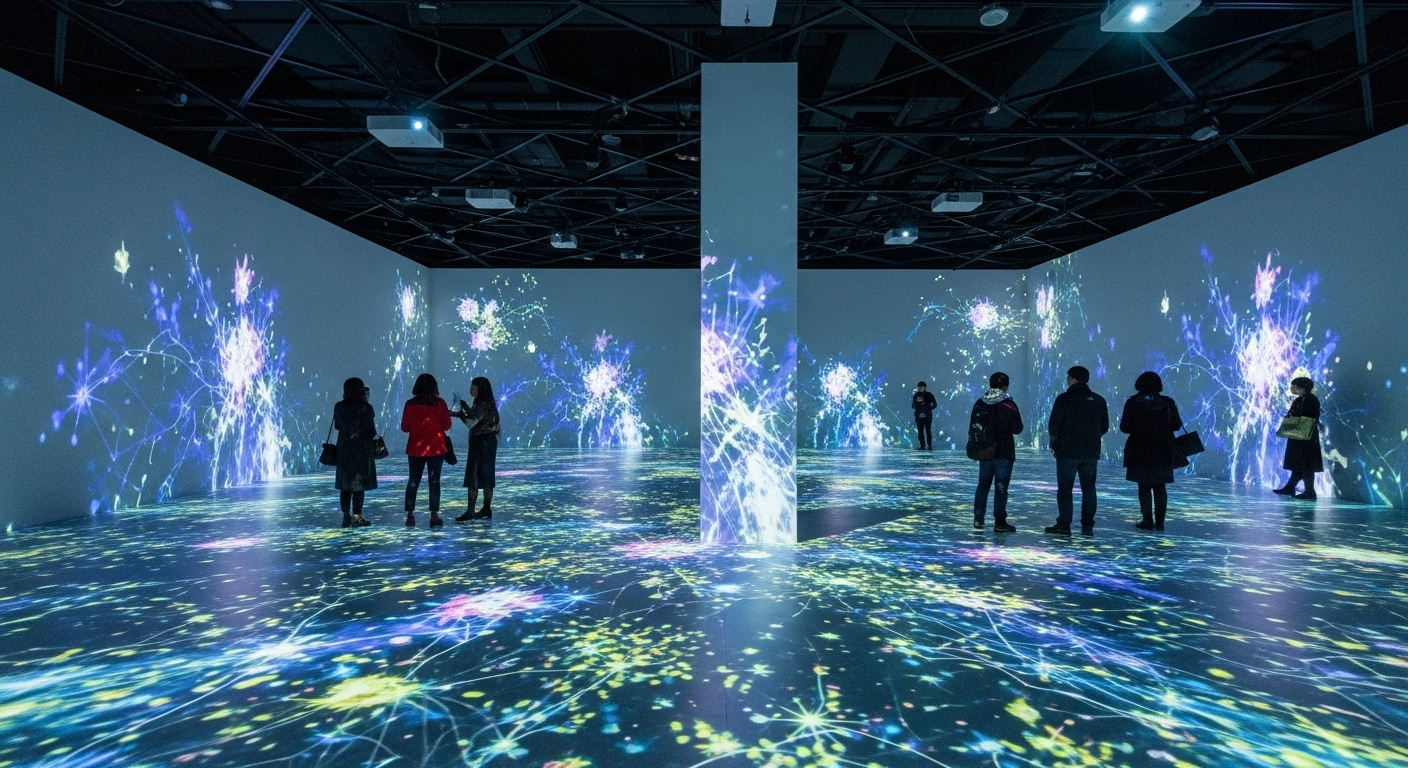Reinventing the Artistic Canvas: The Rise of Digital Installations
Introduction: The world of art and entertainment is ever-evolving, with new forms emerging and old ones being reinvented. One such form that has taken the creative industry by storm is the digital installation. This article will delve into the origins of this medium, its contemporary relevance, and its transformative impact on the arts and entertainment industry.

The Genesis of Digital Installations
The concept of digital installations has its roots in the late 20th century, when artists began to explore the use of technology in their work. Early pioneers like Nam June Paik and Jenny Holzer used television screens, projectors, and LED displays to create immersive, interactive, and thought-provoking experiences. This was an era when the lines between art and technology started to blur, giving birth to a new form of artistic expression.
The Modern Scenario: Digital Installations Today
Fast forward to the current times, and digital installations have become a mainstay in various artistic and commercial settings. From museums and galleries to music festivals and corporate events, these installations captivate audiences with their intricate designs and immersive experiences. Artists like teamLab and Rafael Lozano-Hemmer have elevated the medium, creating installations that respond to the viewer’s presence and movement, offering a truly interactive experience.
The Impact and Significance
Digital installations have revolutionized the way we perceive and interact with art. By breaking the barrier of the traditional canvas, they invite the viewer to become a part of the artwork, fostering a more intimate connection. They have also democratized art, making it more accessible to the digital-savvy audience. Moreover, they have opened up new avenues for artists to express their creativity, expanding the boundaries of what art can be.
The Reception and Future Prospects
While some traditionalists argue that digital installations lack the tangible essence of traditional art forms, the public reception has been overwhelmingly positive. The global success of immersive experiences like the Van Gogh Immersive Exhibit or teamLab’s Borderless Museum testifies to this popularity. As technology continues to advance, we can expect even more innovative and immersive digital installations in the future.
The Dawn of a New Artistic Era
In conclusion, digital installations represent a significant shift in the artistic landscape, redefining the relationship between art and viewer. By integrating technology into the creative process, they have ushered in a new era of artistic expression. As we navigate through this digital age, it is clear that digital installations will continue to play a crucial role in shaping the future of the arts and entertainment industry. With their boundless potential, they will continue to challenge, provoke, and inspire.
The rise of digital installations marks an exciting chapter in the ongoing evolution of art. As we continue to witness the blending of technology and creativity, one thing is certain: art, as we know it, will never be the same.






